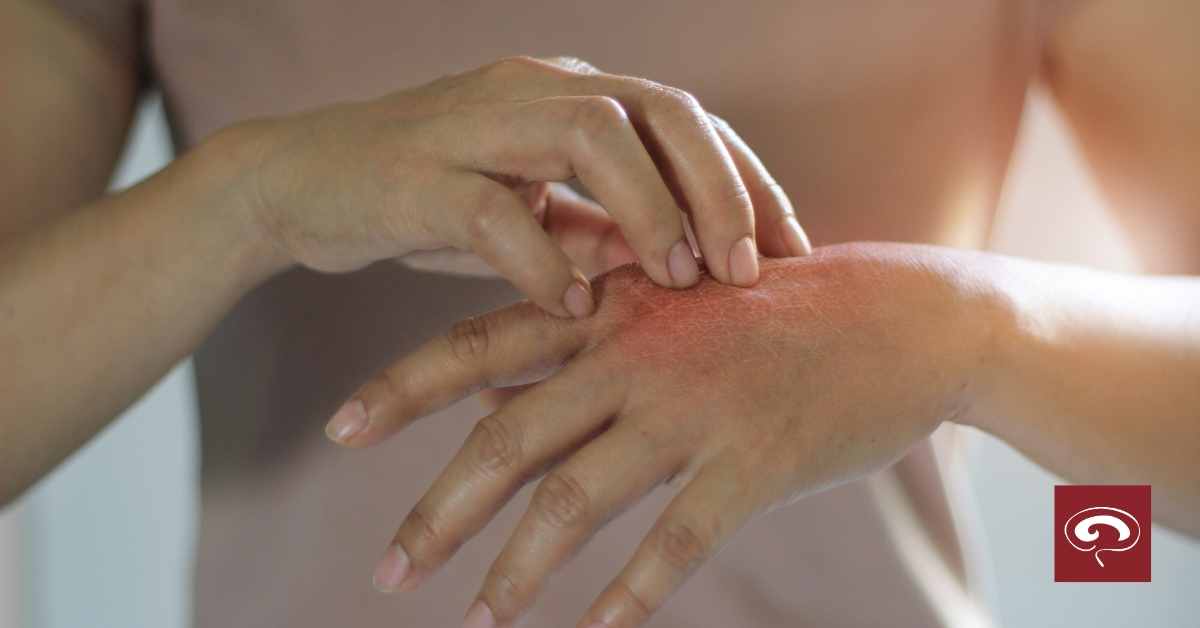
Sensory Hypersensitivity Symptoms in Migraine with vs Without Aura
Migraine with aura is associated with more severe photophobia than migraine without aura.
A cross-sectional observational study published in Headache® investigated whether migraine with aura (MwA) is associated with greater hypersensitivity symptoms of photophobia, phonophobia, and cutaneous allodynia (pain elicited by normally non-painful stimuli) compared to migraine without aura (MwoA). Talia A. Pearl, a medical student at the Washington University School of Medicine in St. Louis and an author on the paper, explained the study hypothesis was that “migraine with aura would be associated with greater symptoms of photophobia.” She noted that prior studies have demonstrated “migraine with aura is associated with increased visual network connectivity and brain responses to visual stimuli, suggesting that migraine with aura might also be associated with greater photophobia symptoms.”
Methods and results
The analysis included 321 migraine patients (146 MwA; 175 MwoA) who had been enrolled into the American Registry for Migraine Research (ARMR). Patients completed questionnaires assessing photosensitivity, hyperacusis and allodynia. Researchers compared mean or median values between groups, and created regression models to analyze the relationship between MwA with photophobia scores, hyperacusis scores and the presence of interictal cutaneous allodynia.
Compared to MwoA, MwA scored higher on photophobia symptoms. However, it did not correspond with greater symptoms of hyperacusis or cutaneous allodynia. This suggests a specific link between MwA and visual hypersensitivity as opposed to a multisensory hypersensitivity state. These results, Pearl says, complement prior neuroimaging research on the topic. Previous studies demonstrated that migraine with aura has more activation in the visual cortex. The association between migraine with aura and photophobia, but not the other sensitivities, suggests a shared mechanism underlying aura and visual hypersensitivity. “The idea is maybe it’s the same pathophysiology that underlies a predisposition towards aura and towards greater visual hypersensitivity,” says Pearl.
Pearl notes that 69% of the participants met the cutoff for photosensitivity, 25% for interictal cutaneous allodynia. “I’m not sure how many people realize how common it is for people with migraine to have significant bothersome photo sensitivity or allodynia between headaches,” she says.
Takeaways for clinicians
Much of prior research on this subject used neuroimaging to demonstrate an association between migraine with aura and this greater interictal activity and functional connectivity in the visual areas. “It raises the question, does this activity we see in imaging correspond to symptoms that patients have?” She says that previously, most of the similar questionnaire studies had relatively small sample sizes. They also used different ways of assessing visual hypersensitivity with conflicting results. “We wanted to take a look using a validated visual hypersensitivity scale, looking at a significantly larger cohort.”
This research utilized data provided by patients enrolled into ARMR, a multicenter, prospective, longitudinal migraine registry, biorepository, and neuroimaging repository. “One of the major benefits of ARMR is that we have so much data for each person, providing a comprehensive view of the patient and their symptoms,” says Pearl.
Implications and next steps
In terms of future research, Pearl says the paper opens the possibility of examining the effects migraine prophylactic medications have on ictal and interictal hypersensitivities. “I’m curious whether or not migraine preventive therapies reduce the intensity of sensory hypersensitivity symptoms in addition to reducing migraine attack frequency.”
Pearl thinks it will be beneficial to headache patients to see such symptoms explored more. She can speak from personal experience: “I live with migraine, and I think that it’s much easier to say, ‘I have a headache,’ versus saying, ‘Sound bothers me all the time.’ In my experience, chronic hypersensitivity is harder to explain to employers or to people at school or to friends and family.”
Additionally, Pearl says the results speak to the importance of practitioners asking patients about hypersensitivity symptoms not just during headaches. “Many people are bothered by light and by touch all the time.” She adds, “Not only does that give you greater insight into their disease process and what they go through, but it also gives you a good opportunity to reassure them, explain these symptoms, and work together to come up with solutions.”
Headache®: The Journal of Head and Face Pain is the official journal of the American Headache Society. AHS frequently reviews published research and provides commentary on the work being done to help advance the understanding of headache and face pain. For more analysis on studies published in Headache®, visit the AHS News page.


